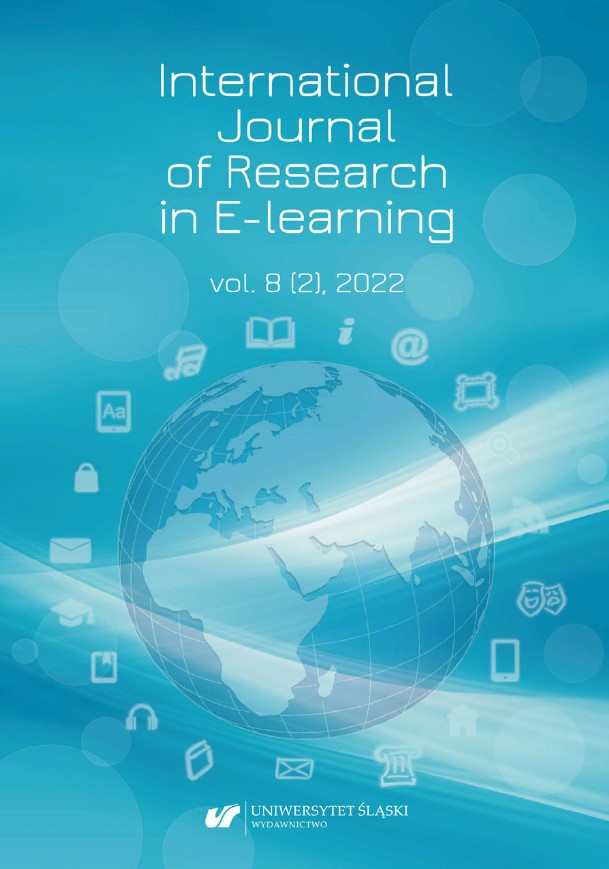Advancing Learning Through Evidence-Based STEM Teaching. (n.d.). edX. https://www.edx.org/course/advancing-learning-through-evidence-based-stem-teaching-5
Google Scholar
Balyk, N., & Shmyger, G. (2017). Approaches and Peculiarities of Modern STEM Education. Physical and Mathematical Education, 2(12), 26-30.
Google Scholar
Baselga, S.V., Garrido, O.M., & Buron, H.G. (2020). Drama-Based Activities for STEM Education: Encouraging Scientific Aspirations and Debunking Stereotypes in Secondary School Students in Spain and the UK. Research In Science Education, 52(2), 749. https://doi.org/10.1007/s11165-020-09968-0.
Google Scholar
Botuzova, Yu. (2018). Geogebra Dynamic Models At The Mathematics Lessons As A STEM-Approach. Physical and Mathematical Education, 3(17), 31-35. https://doi.org/10.31110/2413-1571-2018-017-3-005
Google Scholar
Department of STEM education IMZO. (n.d.). Facebook.com. https://www.facebook.com/groups/805895179541236
Google Scholar
edx 2022 Impact Report. (n.d.). edX. https://impact.edx.org/hubfs/impact-report-2022.pdf
Google Scholar
Emprendiendo en STEM. (n.d.). Coursera. https://www.coursera.org/learn/emprendiendo-en-stem
Google Scholar
English for Science, Technology, Engineering, and Mathematics. (n.d.). Coursera. https://www.coursera.org/learn/stem
Google Scholar
English for STEM (Science, Technology, Engineering, and Mathematics). (n.d.). prometheus.org.ua. https://courses.prometheus.org.ua/courses/course-v1:AH+ENG_STEM101+2020_T1/about
Google Scholar
Finding the Art in Engineering - STEM to STEAM. (n.d.). Udemy. https://www.udemy.com/course/art-in-engineering/
Google Scholar
Hom, E. J. (2022). What is STEM Education? Live Science Contributor. http://www.livescience.com/43296-what-is-stem-education.html
Google Scholar
Hsiao, J., Chen, S., Chen, W., & Lin, S. S. J. (2022). Developing a plugged-in class observation protocol in high-school blended STEM classes: Student engagement, teacher behaviors, and student-teacher interaction patterns. Computers and Education, 178. https://doi.org/10.1016/j.compedu.2021.104403.
Google Scholar
Marchenko, Yu. (2019). Online education: Ilya Filipov about EdEra courses and why Western education is not better than ours. https://platfor.ma/topics/nadlyudskyj-faktor/onlajn-prosvitaillya-filipov-pro-kursy-edera/
Google Scholar
Martyniuk, O. O. (2018). STEM technologies as a means of forming the information and digital competence of teachers and students. Collection of scientific works of the Kamianets-Podilskyi National University named after Ivan Ohienko. Series: Pedagogical, 24, 18-22. https://doi.org/10.32626/2307-4507.2018-24.18-22
Google Scholar
Meaningful Math. (n.d.). Activate Learning. https://activatelearning.com/meaningful-math/
Google Scholar
Methodological recommendations for the development of STEM education in institutions of general secondary and extracurricular education for the 2018/2019 academic year. (2018, Jule 19). Osvita.ua. https://osvita.ua/legislation/Ser_osv/61444/
Google Scholar
Oliynyk, В. В., Samoylenko, О. М., Batsurovska, І. В., & Dotsenko, Н. А. (2020). STEM education in the system of training of future engineers. Information Technologies and Learning Tools, 80(6), 127–139. https://doi.org/10.33407/itlt.v80i6.3635
Google Scholar
On the approval of the Concept of the development of science and mathematics education (STEM education). (2020, August 05). Verkhovna Rada of Ukraine. https://zakon.rada.gov.ua/laws/show/960-2020-%D1%80#Text
Google Scholar
Park, W., Wu, JY., & Erduran, S. (2020). The Nature of STEM Disciplines in the Science Education Standards Documents from the USA, Korea and Taiwan Focusing on Disciplinary Aims, Values and Practices. Science & Education, 29(4), 899-927. https://doi.org/10.1007/s11191-020-00139-1.
Google Scholar
Qin, J. R., & Fu, G. S. (2017). Stem Education: Interdisciplinary Education Based on Real Problem Scenarios. China Educational Technology, 4, 67-74. https://caod.oriprobe.com/articles/50888223/STEM_Education__a_Interdisciplinary_Education_Base.htm
Google Scholar
Riley de León (2021). Coursera files for IPO amid the online learning boom. https://www.cnbc.com/2021/03/05/coursera-files-for-ipo-amid-online-learning-boom-.html
Google Scholar
Shah, D. (2021). A Decade of MOOCs: A Review of MOOC Stats and Trends in 2021. https://www.classcentral.com/report/moocs-stats-and-trends-2021/
Google Scholar
Skowronek, M., Gilberti, R. M., Petro, M., Sancomb, C., Maddern, S., & Jankovic, J. (2022). Inclusive STEAM education in diverse disciplines of sustainable energy and AI. Energy and AI, 7. https://doi.org/10.1016/j.egyai.2021.100124.
Google Scholar
STEM education. (n.d.). Institute for Modernization of the Content of Education. https://imzo.gov.ua/stem-osvita/
Google Scholar
STEM. (n.d.). Wikipedia. https://uk.wikipedia.org/wiki/STEM
Google Scholar
Stryzhak, O. Y., Slipukhina, І. A., Polikhun, N. I., & Chernetckiy, I. S. (2017). STEM-education: main definitions. Information Technologies and Learning Tools, 62(6), 16–33. https://doi.org/10.33407/itlt.v62i6.1753.
Google Scholar
Vakil, S. & Ayers, R. (2019). The racial politics of STEM education in the USA: interrogations and explorations. Race ethnicity and education, 22(4), 449-458. https://doi.org/10.1080/13613324.2019.1592831.
Google Scholar
Wang, T., Wang, L., Fu, L., & He, L. (2022). The novel STEM practice course and industrial robot educational platform via university-middle school collaboration. https://doi.org/10.1007/978-981-15-8155-7_316.
Google Scholar
We share knowledge with the world. (n.d.). Udemy. https://about.udemy.com/
Google Scholar
Yan, M. (2017). Case study of STEM education in the family. Proceedings of the 2017 3rd International Conference on Economics, Social Science, Arts, Education, and Management Engineering (ESSAEME 2017), Atlantis Press, 119, 2280-2284. https://doi.org/10.2991/essaeme-17.2017.463
Google Scholar
Yata, C., Ohtani, T. & Isobe, M. (2020). Conceptual framework of STEM-based on Japanese subject principles. IJ STEM Ed, 7, 12. https://doi.org/10.1186/s40594-020-00205-8
Google Scholar
Zhao, Z. J. (2015). Progress of Stem Education Policy in the United States. Shanghai: Shanghai Science and Technology Education Press.
Google Scholar
Zhou, C. & Li, Y. (2021). The Focus and Trend of STEM Education Research in China —Visual Analysis Based on CiteSpace. Open Journal of Social Sciences, 9, 168-180. https://doi.org/10.4236/jss.2021.97011.
Google Scholar


 https://doi.org/10.31261/IJREL.2022.8.2.05
https://doi.org/10.31261/IJREL.2022.8.2.05
